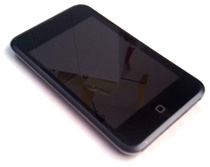We recently reported on the potential uses for the iPad in healthcare. Already, apps are being developed and released to help doctors and patients access and manage information easily. Since the iPad was released in April, over 2 million units have been sold. But perhaps more important to the discussion of mobile computing in healthcare are the iPhone and iPod Touch, at nearly 100 million units sold. The handheld devices have long been used in healthcare, with over 1500 apps already available for healthcare professionals, according to Scientific American.
One example is ‘iTriage,’ from Healthagen. This app gives patients access to their Personal Health Records (PHRs), as well as some symptom-checking, and a healthcare directory. From the press release: “1 in 14 Americans has used a PHR to take better care of themselves, ask more questions and know more about their health, than when their personal health information was less accessible.” We have discussed Electronic Medical Records (EMRs) before, and the real state of data exchange and standards development is not all that simple, but at least this is a step in a good direction. When EMRs (or PHRs) become more universal, and interoperable, these types of apps will become invaluable.
Another example is Bayer’s ‘myBETAapp.’ Despite the name sounding like an unfinished software project, this is a finished app that helps MS patients track their Betaseron(R) treatments. The app “provides patients with injection reminders, injection site rotation assistance and injection history,” according to their press release.
One critical aspect of mobile medicine is imaging quality. In order for a doctor to make a diagnosis or provide a consult, they often need to be able to see x-rays, MRIs, or other diagnostic images with very high resolution. In the past, this has been a limiting factor on small, mobile computing devices. But with this weeks announcement of the iPhone 4, we may see a whole new wave of mobile imaging capabilities. The display on the newest iPhone has four times as many pixels as the previous generations. They claim that when viewed at a normal distance, the pixel density is greater than the human retina can distinguish, so the individual pixels become invisible, and all you see are clear, smooth images. Whether this is true, or just marketing-speak, remains to be seen in the real world, but initial reports from the launch event seem to agree that it looks much sharper than any existing mobile device. In addition, the iPhone 4 has a 5 megapixel camera and can record HD video. This is another boost to mobile medicine, since a doctor could record and share details of a case, or even a procedure, from anywhere in the world. HealthLeaders Media has a nice article about the possible uses, including training, real-time remote monitoring, 3-D animation, and more.
Mobile Medicine is just a part of the healthcare technology revolution. Telemedicine, Electronic Medical Records, and Online Medicine have the potential to transform the way we receive care and interact with our healthcare providers. All of these innovations can improve care and save money, if done right. KwikMed is at the forefront of Online Medicine, with the first-and-only government-regulated and licensed process for prescribing and fulfilling prescriptions online.








